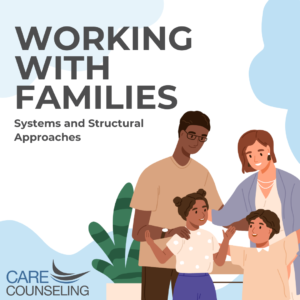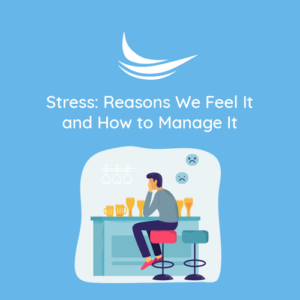Working with Families: Systems and Structural Approaches
 Families are complex, made up of individuals that come together and work within a system that has its own structure. The family unit looks very different, depending on the diversity of the structure and patterns within the system. The family hierarchy will vary widely, largely impacted by family cultural components such as roles, boundaries, and power dynamics.
Families are complex, made up of individuals that come together and work within a system that has its own structure. The family unit looks very different, depending on the diversity of the structure and patterns within the system. The family hierarchy will vary widely, largely impacted by family cultural components such as roles, boundaries, and power dynamics.
The family may include biological parent(s), gestational and non-gestational parent(s), adoptive parent(s), stepparents, and grandparents. There may be children with siblings and extended family support. Families may be created, blended families, and include multi-generational kinship networks.
Systems and structural family therapy approaches both have some excellent contributions to family work. Let’s look at some common approaches that are utilized in therapy sessions.
A multicultural lens to view families.
The lens is which we view families is important. A multicultural lens is recommended to consider factors such as each person’s race, ethnicity, gender, age, sexual orientation, and religious or spiritual influences.
A curiosity about the family processes.
Utilizing curiosity about the family processes such as emotions within the family history across generations can help build understanding as you work with families to regulate emotions and work on behaviors. Using a genogram is a great visual tool that can help identify and learn about emotional processes within the family or origin from a systemic perspective.
Language such as “we” to focus on the family or “I.”
Using “We” and “I” language is used when taking accountability for one’s individual role in the family system and when talking about the family. This can help engage the family as a collective unit versus focusing on the individual as the problem. The goal is to engage in taking action that is aligned with values. Try using “We” and “I” language during family communication.
Focus on increasing connectedness.
A Bowenian family therapy approach focuses on balancing connection and autonomy while normalizing family challenges. A genogram can be helpful here again when working with family patterns identified on the genogram (typically completed near the beginning of therapy), and also when working with patterns of triangulation and intergenerational patterns.
Join the family while evaluating structures and interactional themes.
Therapists join in with families by adopting ways to relate and connecting these back to values and events as these are observed. The therapist helps to empower families through the process of identifying interactional patterns such as identifying the sub-systems (e.g., parents, grandparents, children) and working to restructure these.
Restructure the family system.
After joining and evaluating structure, techniques that are characteristic of a structural family therapy approach include setting boundaries, reframing, and role play. The cultural impact of structure and factors such as each family member’s level of acculturation are important considerations. Strategies that therapists have used working with families may include family drawing or strategic use of interactive play using a doll house. Paradoxical interventions much also be utilized to work with resistance in a constructive way such as assigning the family to do the opposite such as not working together.
Written By: Charlotte Johnson, MA, LPCC



























